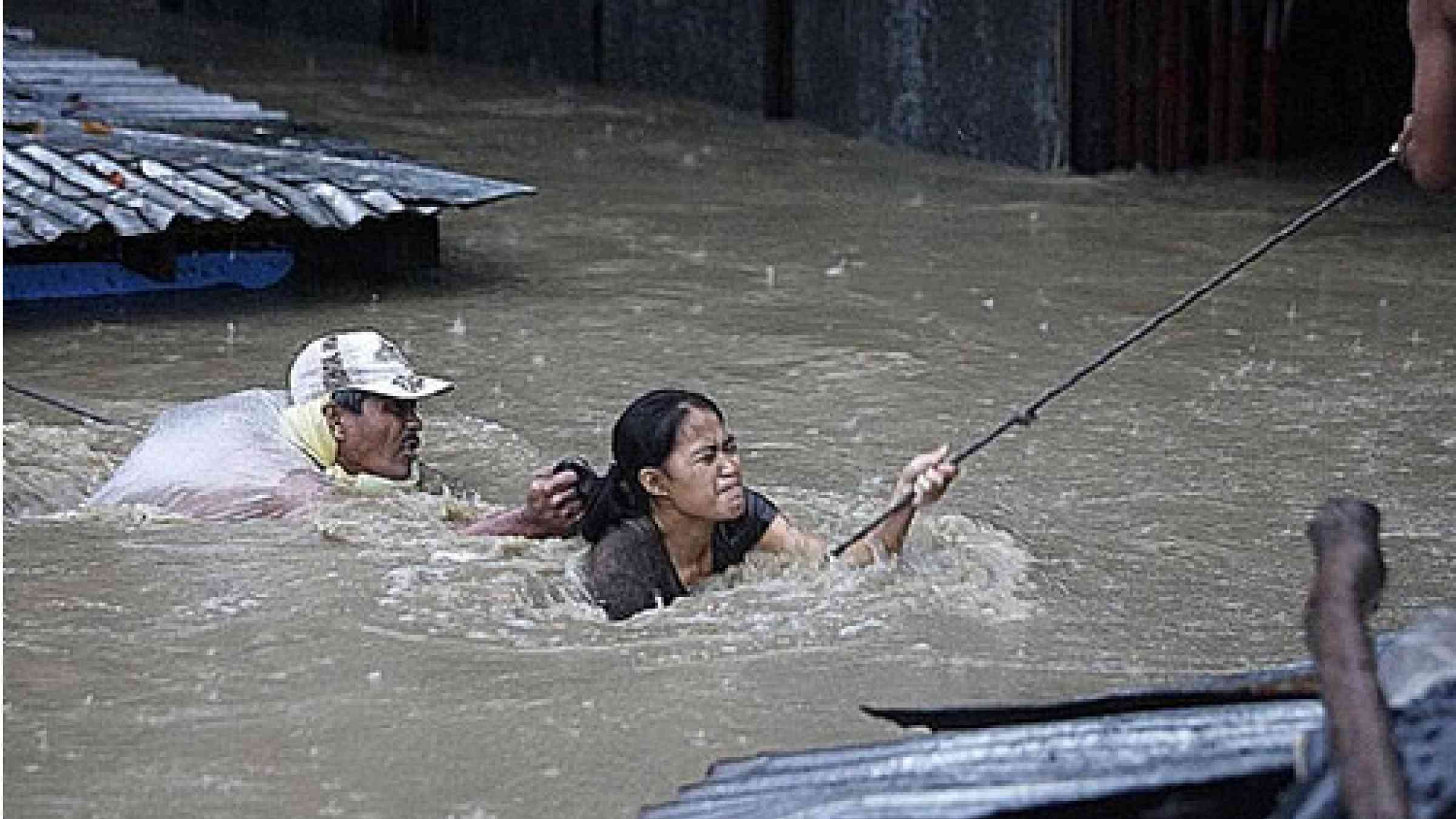Typhoon Ondoy - Realities on the ground deserve priority for action

As the death toll rises in the Philippines, after Typhoon Ondoy struck the country and left the main capital Manila in havoc, poor drainage systems and garbage disposal problems appear to have aggravated the impacts of the disaster.
The lack of drainage systems has been identified as one major disaster risk factor that intensifies the run-off of water during storms and heavy rains together with unplanned urban development, the absence of efficient early warning systems and ecosystem degradation by the recent Global Assessment report on Disaster Risk Reduction released last May, in Bahrain.
“Spending on disaster risk reduction is not a cost but an investment for safer and more secure cities” said Margareta Wahlström, Special Representative of the UN Secretary-General for Disaster Risk Reduction, calling for more actions to reduce risks and increasing investments in disaster risk reduction. “Under-investment in building and maintaining drains can trigger bigger disasters” she added.
The intense and record-high rainfall in the Philippines has left at least 400 persons dead and dozens missing while tens of thousands have been evacuated.
Yesterday the Philippines Senator Legarda, who is also the UNISDR Asian champion for disaster risk reduction urged her government for more prevention measures to reduce the impact of weather related disasters.
“Realities on the ground deserve priority for action” said Senator Legarda. “We must order massive cleaning of esteros and all waterways to reduce our vulnerability to flooding and implement the solid waste management law. The public must be educated on simple double actions such as proper waste disposal and waste segregation.”
Disaster risk is increasing in an alarming way threatening development gains, economic stability and global security with disproportionate impacts on developing countries and poor rural and urban areas but action can be taken to reduce it.
China spent US$ 3.15 billion on flood control between 1960 and 2000, which is estimated to have averted financial losses of about US$ 12 billion. In Bangladesh, efficient early warning systems and cyclone shelters have contributed to considerably reduce human and assets losses. The 2007 Cyclone Sidr killed 3,400 people when in 1991 a similar cyclone killed 138,000 people.
The last Global Platform for Disaster Risk Reduction held in Geneva recommended that the equivalent of 10% of humanitarian relief funds should be directed to disaster risk reduction; a further 10% should be allocated to post disaster reconstruction and recovery projects and at least 1% of all national development funding reserved for risk reduction measures.